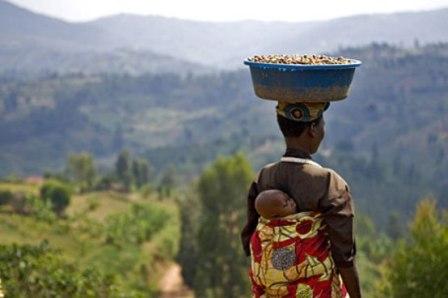Apart from oil and diamonds, Angolas major export earners for the past four decades, the country previously had substantial exports of cash crops which fed food processing and textile industries
Much reduced in scale since independence, coffee, cotton, fruit and other plantation crops are now experiencing an accelerating revival in Kwanza Norte.
An agricultural project nearing completion is the Mucoso irrigated perimeter, near Cambambe. Mucoso once exported to European markets but output slumped in the 1990s and much of its area reverted to subsistence farming.
Spanish company Incatema Consulting has upgraded Mucoso with the installation of a modern drip-feed watering system composed of two million metres of pipes. As a result, some 500 ha will benefit from mechanised farming. Another 500 ha will be subdivided into 166 smaller holdings, which will produce pineapples, mangoes, citrus fruits and vegetables. Apart from improving the local diet, Mucoso will also provide raw materials for food-processing industries at Cambambe.
Irrigated fruit growing is generally labour-intensive and thus a good source of employment. The hope is to eventually resume Angola's once buoyant agricultural export trade.
Another cash crop being resurrected is cotton. Kwanze Norte has long been a cotton producer, but plans are afoot to boost local cotton production by irrigation.
Coffee also has a long history in the area, thanks to the shade provided by its highland forests. Coffee output is slowly reviving as neglected plantations are being removed and replaced. Bushes should ideally be replaced every seven years, but Angola has many trees over 30 years old.
Co-operation agreement with Vietnam
Angola signed a co-operation agreement last July with Vietnam's Thai Hoa Group, the country's top Arabica producer and trader, and with Brazilian consultants to refurbish coffee plantations. The plan is to plant 100,000 ha over the next decade.
Before independence, the Camabatela area in the Northeast of the province was a major cattle-rearing area, and it provided 60 per cent of northern Angola's beef supply. Angola's Ministry for Agriculture has been bringing more cattle into this region and cattle numbers are today around 7,000. Local breeders receive the cattle on the condition that they return a similar number several years later. The government is now providing veterinary support services.
Another government-led agribusiness project in Kwanza Norte aims to replace more expensive meat products while also cutting imports of poultry products. This is the role for the recently established poultry and egg enterprise at Lucala, which is located on the railway and main highways as well as having good access to water and electricity supplies. This US$42mn South Korean financed project produces two million eggs a month and hatches 150,000 chicks a week for distribution to small farmers in the region. The project will also produce chicken feed and a factory capable of processing 32,000 chickens a day.
Taken from African Farming and Food Processing March/April 2013





